About clay target shooting
Home » About clay target shooting
About clay target shooting
History of Clay Target Shooting
Clay target shooting originated in the 1860’s as a way of practising for live bird shooting. The targets were originally glass balls filled with feathers.
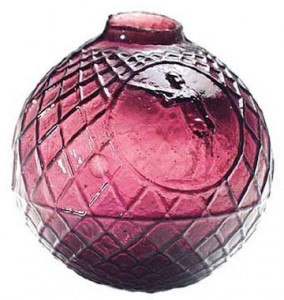
In the 1880’s the first version of the disc shaped clay targets we now use were invented. They were originally made of clay and fired in a kiln. Nowadays our targets are made of a mix of lime and pitch and come in a variety of sizes and colours.

Shooting is one of the 10 original sports of the Modern Olympic Games first held in 1896. Shotgun shooting was introduced in the 1900 Paris Olympic Games in the form of live bird shooting, this was the only time in Olympic history that live birds were used and the medallists are not included in the offical Olympic medal tally. At the 1908 London Olympic Games clay targets were used for the first time.
Up to and including the 1992 Barcelona Olympic Games clay target shooting was a mixed event where men and women competed against one another. This changed after a Chinese woman called Shan Zhang won the Skeet event shooting all 200 out of 200 targets. Women were then barred from shooting Olympic Trap and Skeet. A new discipline of clay target shooting was developed for women called Double Trap. This was the only clay target shooting event women were allowed to compete in for the 1996 Atlanta Olympic Games. Women were once again allowed to compete in Olympic Trap and Skeet in the Sydney 2000 Olympic Games but in seperate competitions, women shot 75 qualification targets and men shot 125 targets. Women’s Double Trap has since been discontinued at Olympic level after the 2004 Athens Olympic Games.
Disciplines of Clay Target Shooting
Skeet
In Skeet the targets are thrown from two traps, a high house on the left of the field and a low house on the right of the field and thrown across to the opposite side of the field. Only one shot can be fired at a target and must be hit within the shooting boundary.
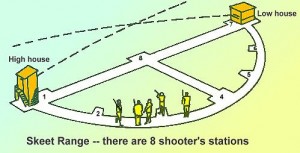
There are two forms of Skeet shot in Australia. American Skeet is the most popular and is a good starting point for beginners. The targets are slower and can be shot gun up (the gun is on the shooter’s shoulder when they call for the target.
Olympic Skeet the targets are thrown much faster than American Skeet targets, there is also a delay of up to 3 seconds (the target may come out straight away or emerge up to 3 seconds after the shooter calls for the target). The gun must be held in a gun down position, the shooter is only allowed to put the gun on their shoulder after they see the target emerge. Pairs of targets are shot on every station except station 8.
Trap
In Trap the targets emerge from a trap house in front of the shooter and travel away from the shooter at varying angles. There are 5 shooting positions and each shooter receives 5 targets from each station on the layout.There are two forms of Trap in Australia. The domestic form is the most popular discipline by number of participants of clay target shooting in Australia.
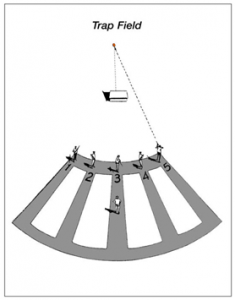
Olympic Trap targets travel at over 100kph and there is a wider variation of angles and heights that the targets are thrown.
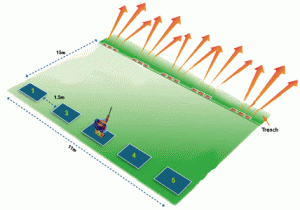
Double Trap
In Double Trap two trap targets are thrown simultaneously. Domestic Double Trap makes use of a domestic trap layout. Olympic Double Trap targets are thrown at a much faster speed and require an Olympic Trap layout.
Sporting
Sporting targets are designed to simulate live game. Targets include rabbits that roll along the ground, springing teals, battue/duck, mini targets, super mini targets and more. This is one of the most challenging and entertaining forms or clay target shooting.
Helice ZZ
This is designed to simulate the erratic flight of a live bird. There are two parts to these targets, a marker cap and a plastic propeller wing. The shooter must hit the target so that the maker cap falls within a fenced area to score a point.
Equipment
Shotguns
Competition grade shotguns range in price from around $2,000 to anything over $200,000 for a premium grade shotgun. The two main manufacturers of shotguns used at Olympic level are Perazzi and Beretta.
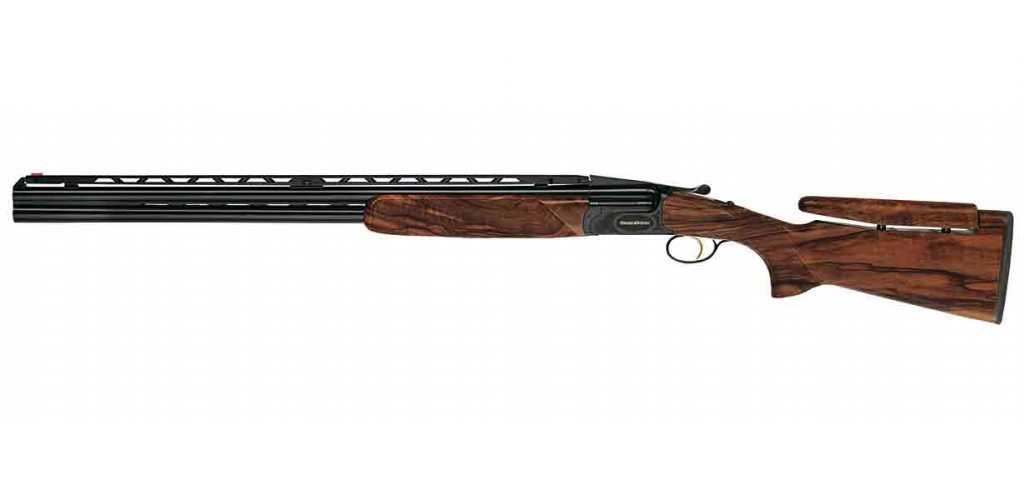
Over and under shotguns are the most popular competition guns. Side by side shotguns are still available but are mostly used as hunting guns. Semi-automatic shotguns are a popular choice for women and people with back or shoulder problems because they have less recoil than a standard shotgun.
Shotguns are available in various gauges (gun barrel diameter). The smallest commercially available shotgun is the .410 and the most common is the 12 gauge.
Shotgun Shells
Rather than there being a single projectile like a rifle, a shotgun cartridge contains in excess of 300 tiny balls of lead (shot). When the shot leaves the shotgun it spreads to form a pattern of shot to intercept the target.
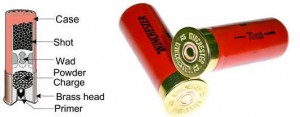
Shotgun cartridges are available in different gauges to match the shotgun.

Most 12 gauge shotgun cartridges contain 28 grams of lead. Olympic discipline cartridges are limited to 24 grams of lead.
Australia’s Olympic Games Success
Catherine Skinner – Womens Trap Gold in 2016
Michael Diamond – Mens Trap Gold in 1996 and 2000
Russell Mark – Mens Double Trap Gold in 1996 and Silver in 2000
Susie Balogh – Womens Trap Gold in 2004
Adam Vella – Mens Trap Bronze in 2004
Deserie Huddleston – Womens Double Trap Bronze 1996

 0468 794 499
0468 794 499
